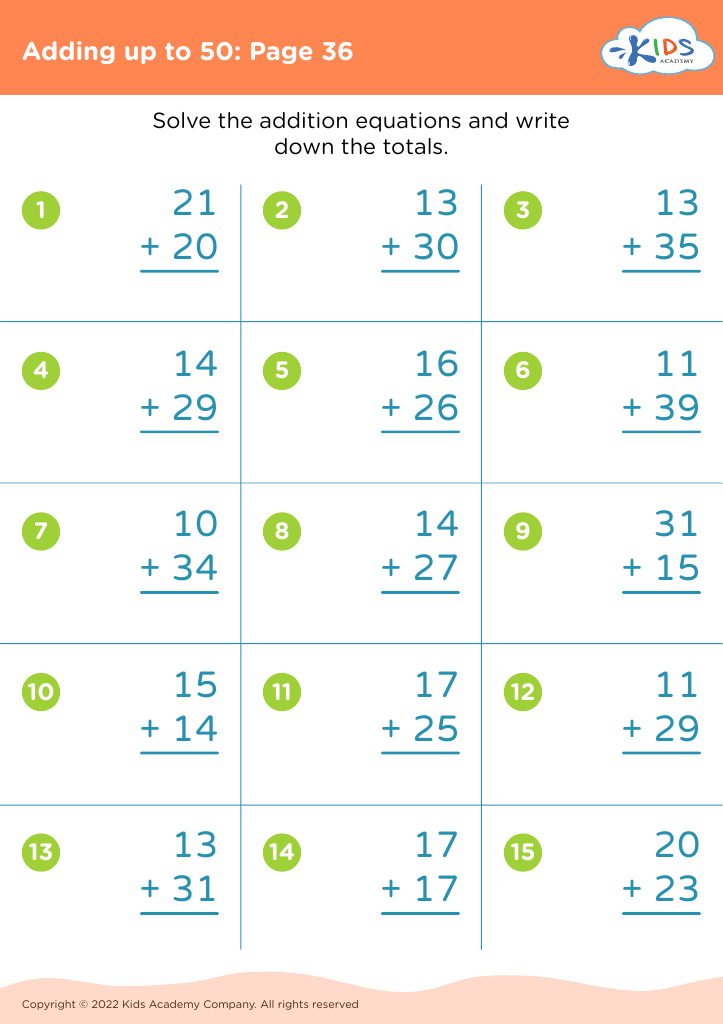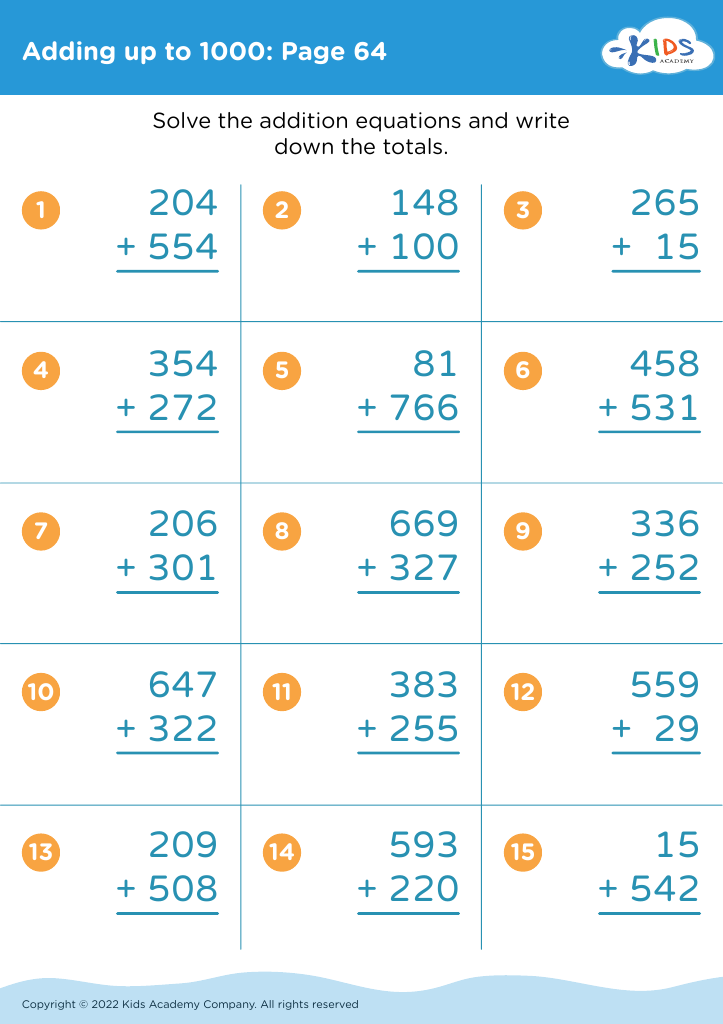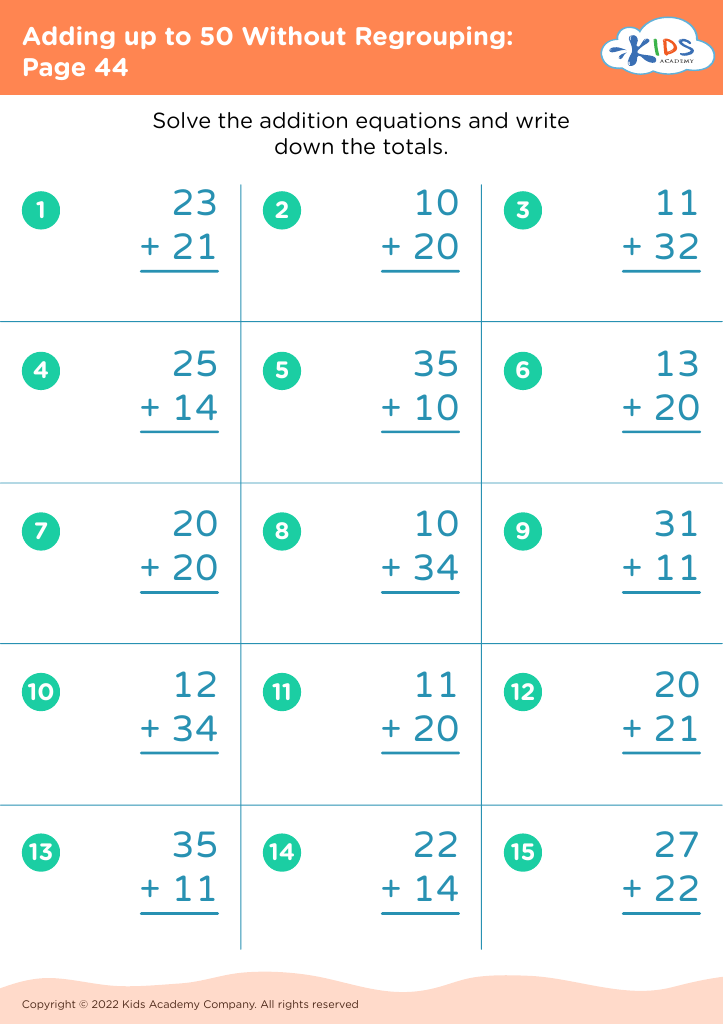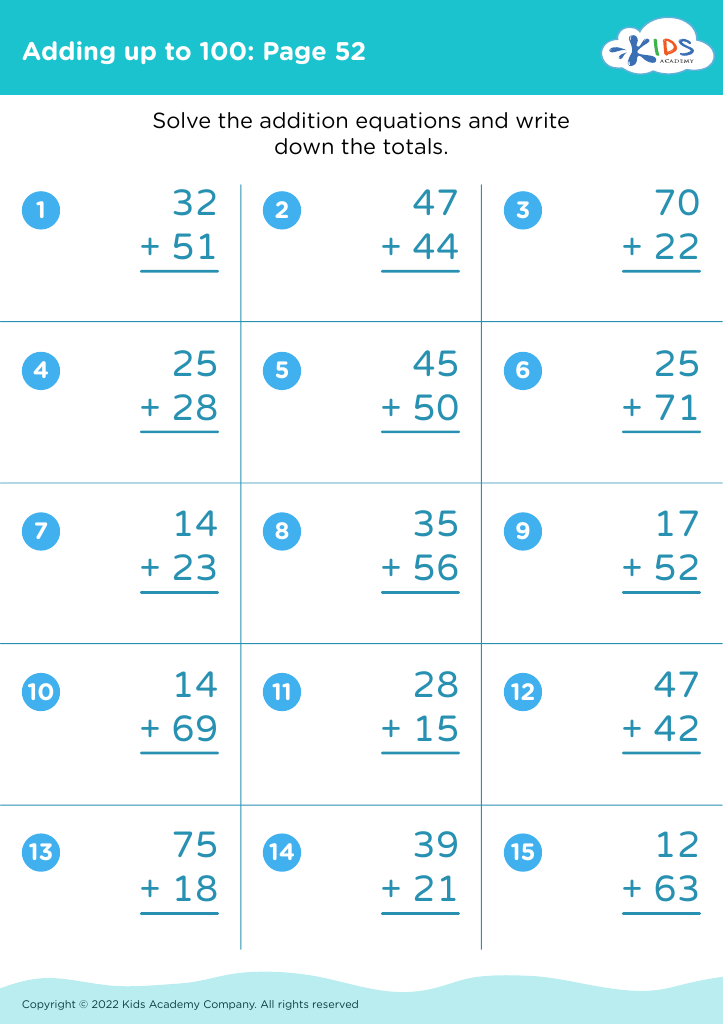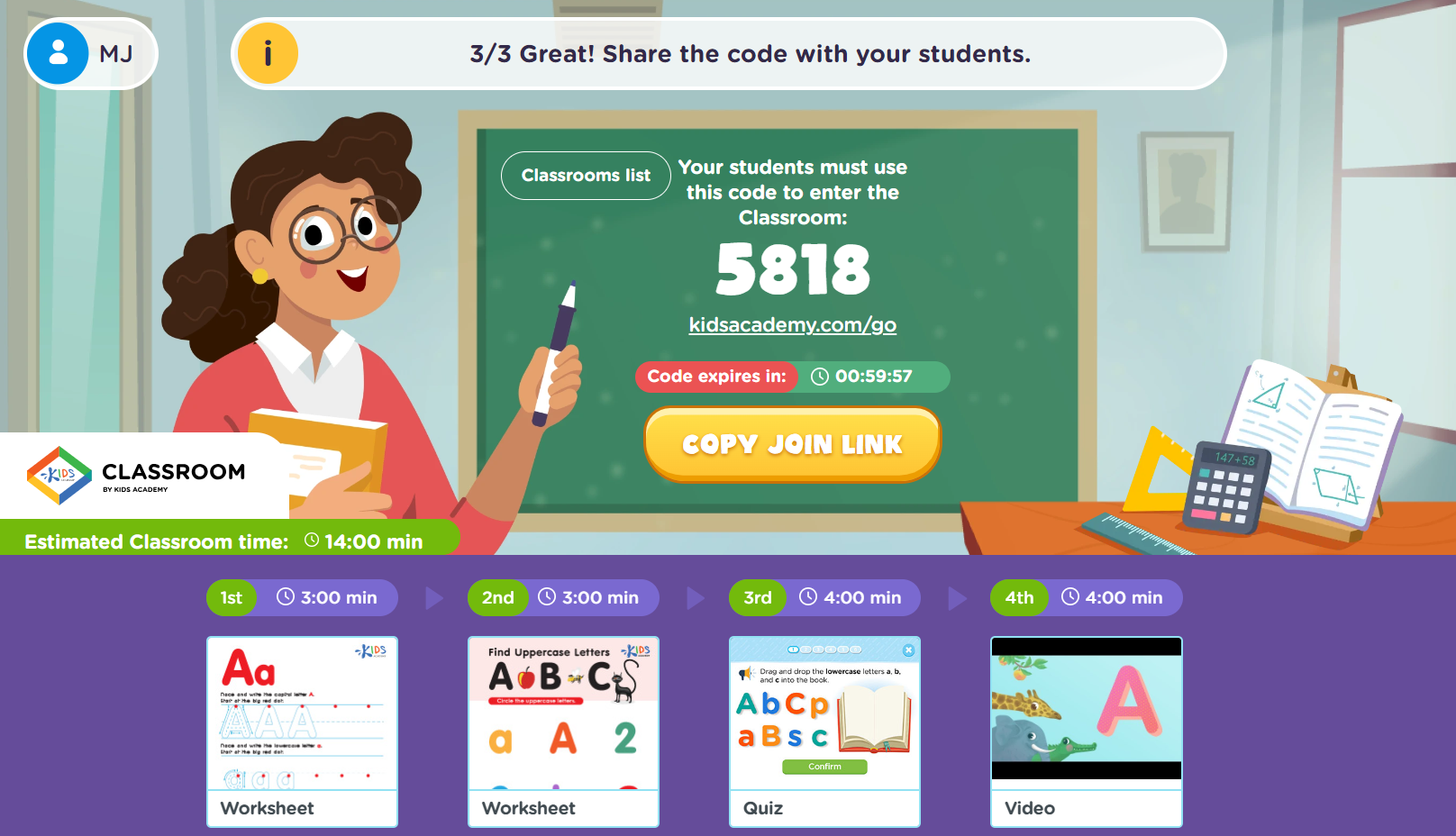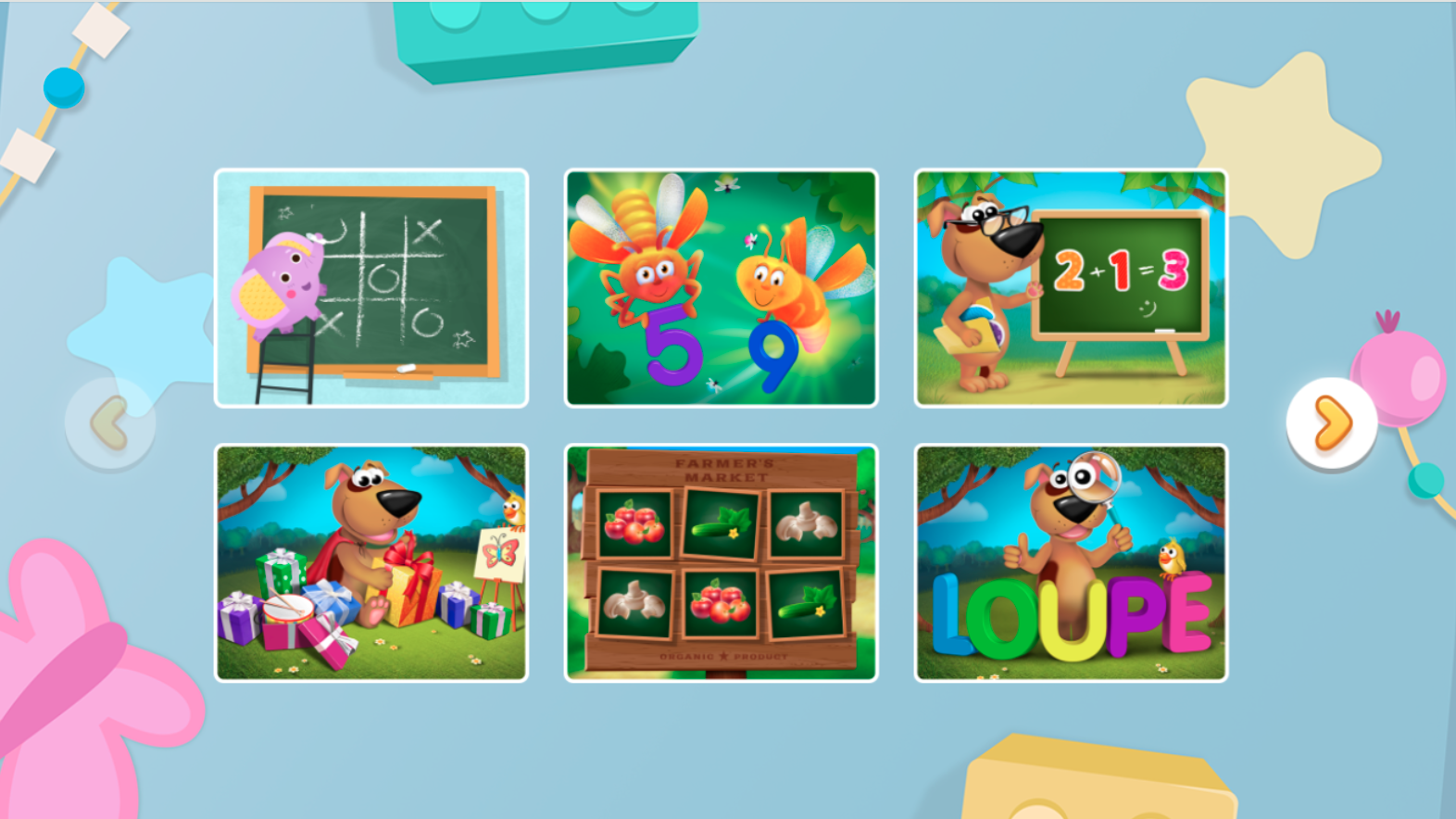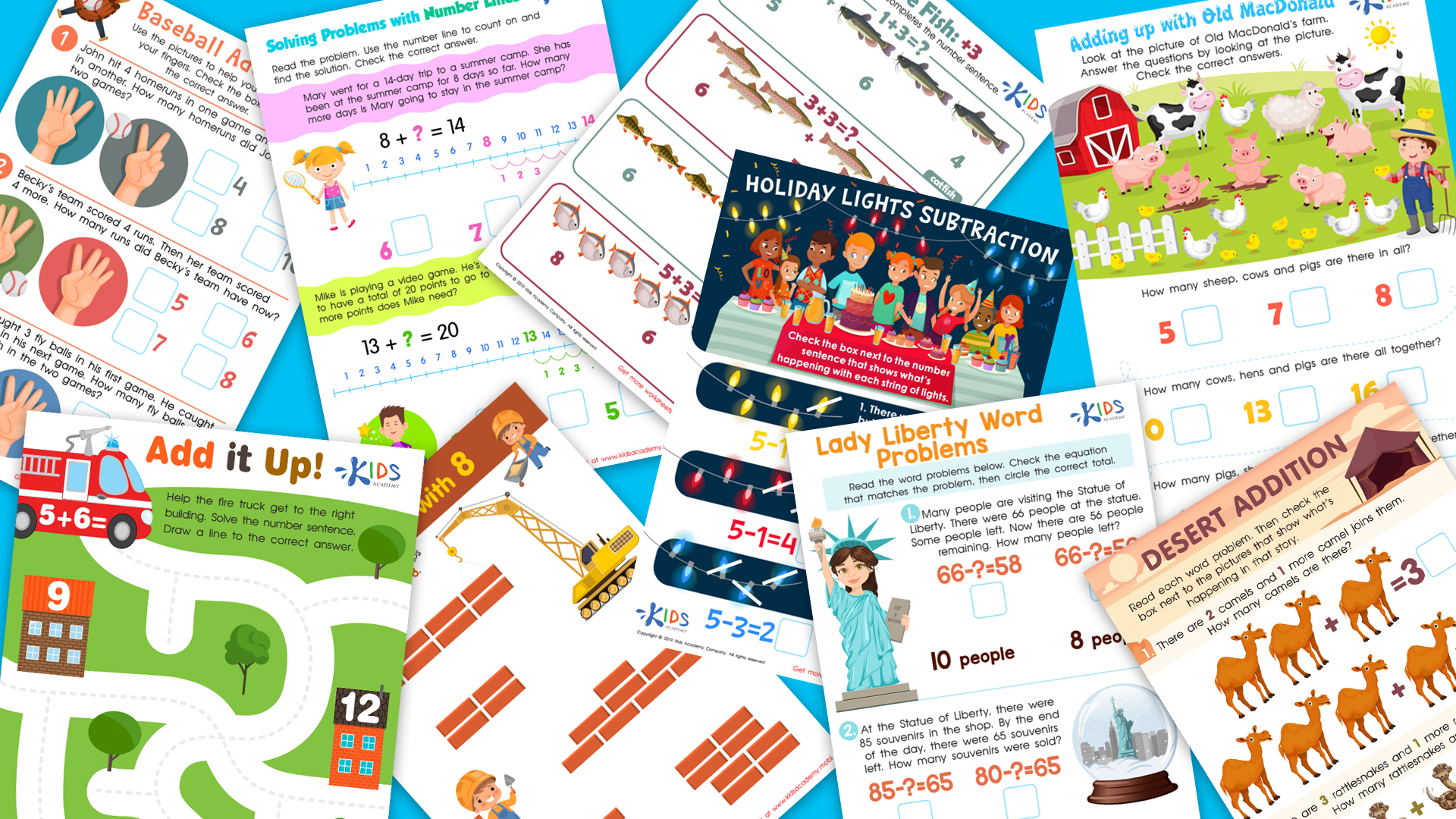Understanding sequencing Math Worksheets for Ages 6-8
11 filtered results
-
From - To
Boost your child's math skills with our "Understanding Sequencing Math Worksheets" designed for ages 6-8. These engaging and educational printables help young learners grasp the concept of sequencing by arranging numbers, events, and more. Each worksheet is crafted to enhance logical thinking, pattern recognition, and problem-solving abilities. Perfect for both classroom and at-home learning, these activities make mastery of sequencing fun and interactive. Watch your child build a strong foundation in math that will support their academic success. Download our sequencing worksheets today and give your child the head start they deserve!
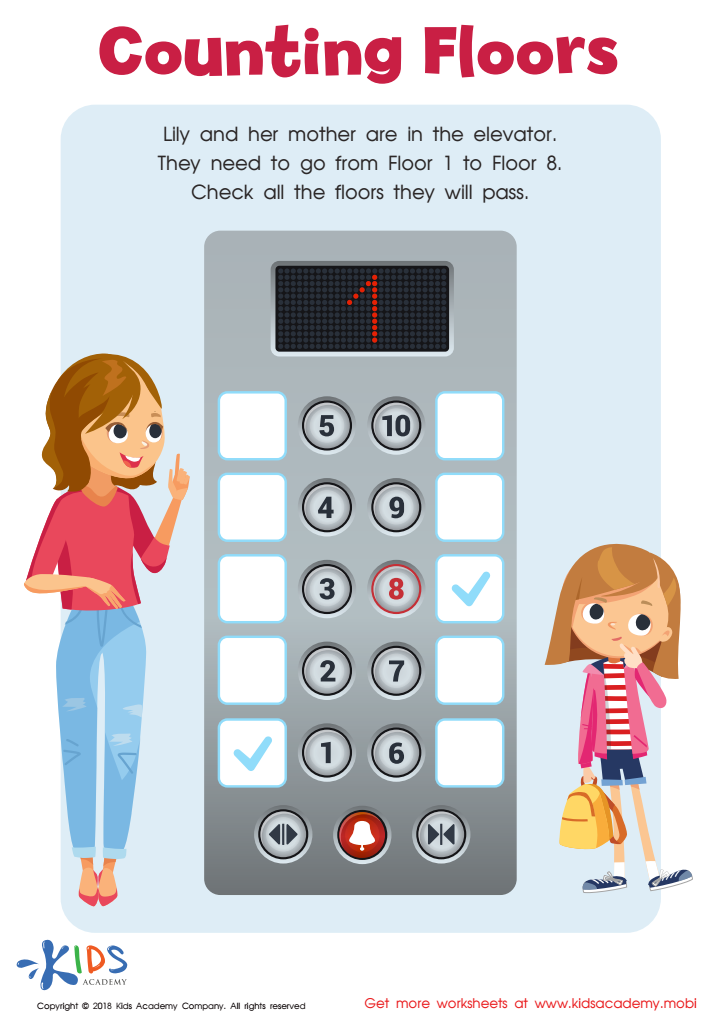

Counting Floors Worksheet
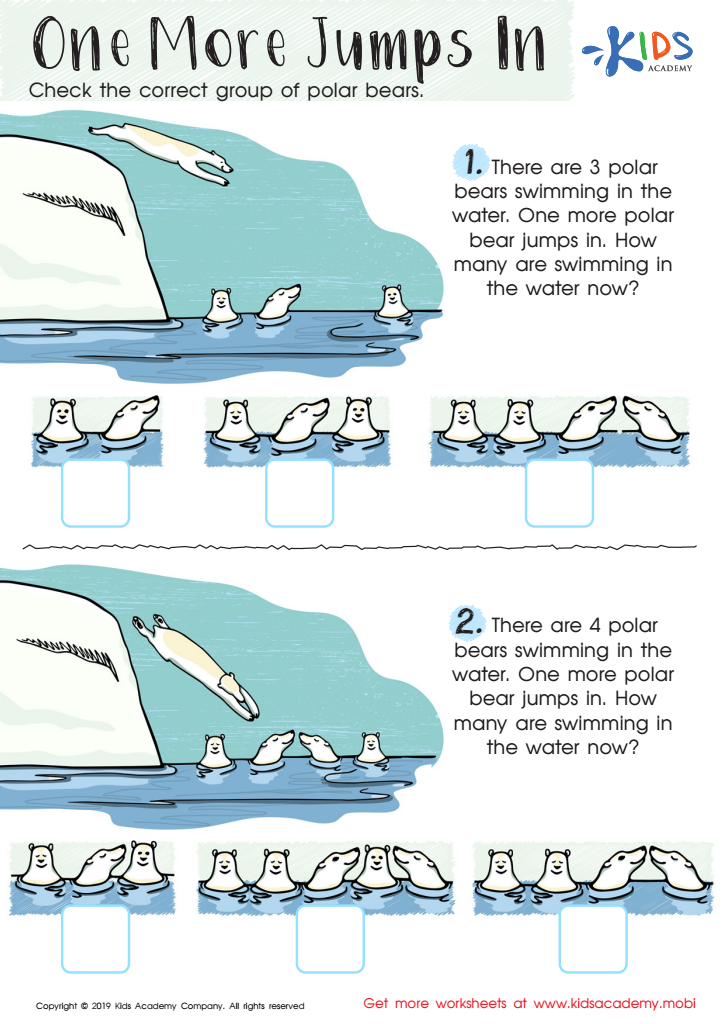

One More Jumps In Worksheet
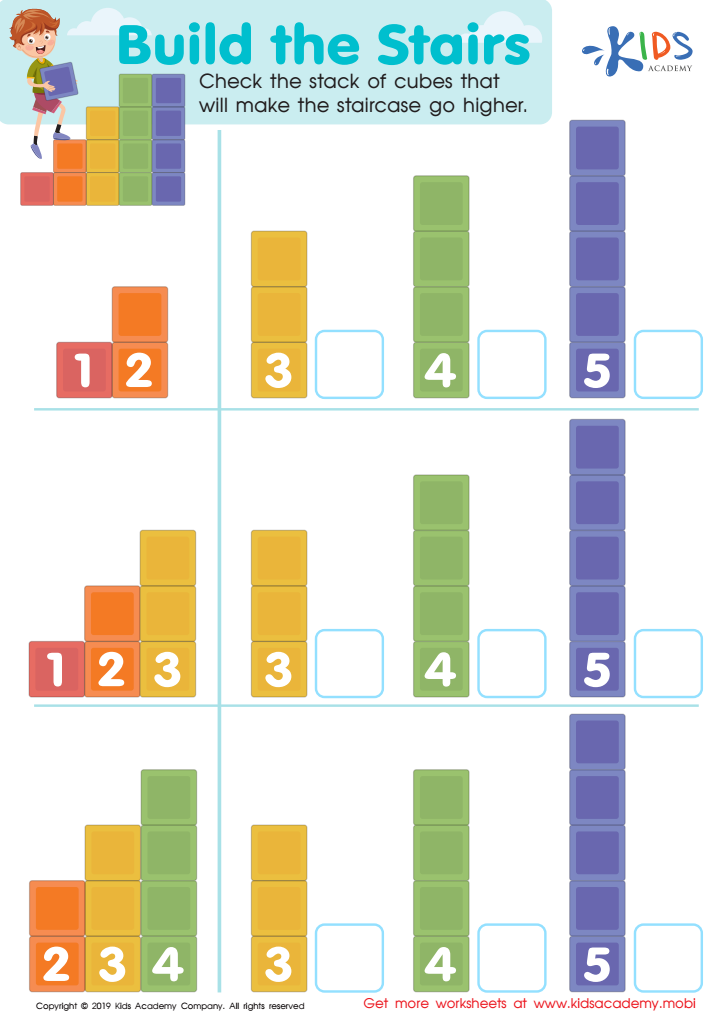

Build the Stairs Worksheet
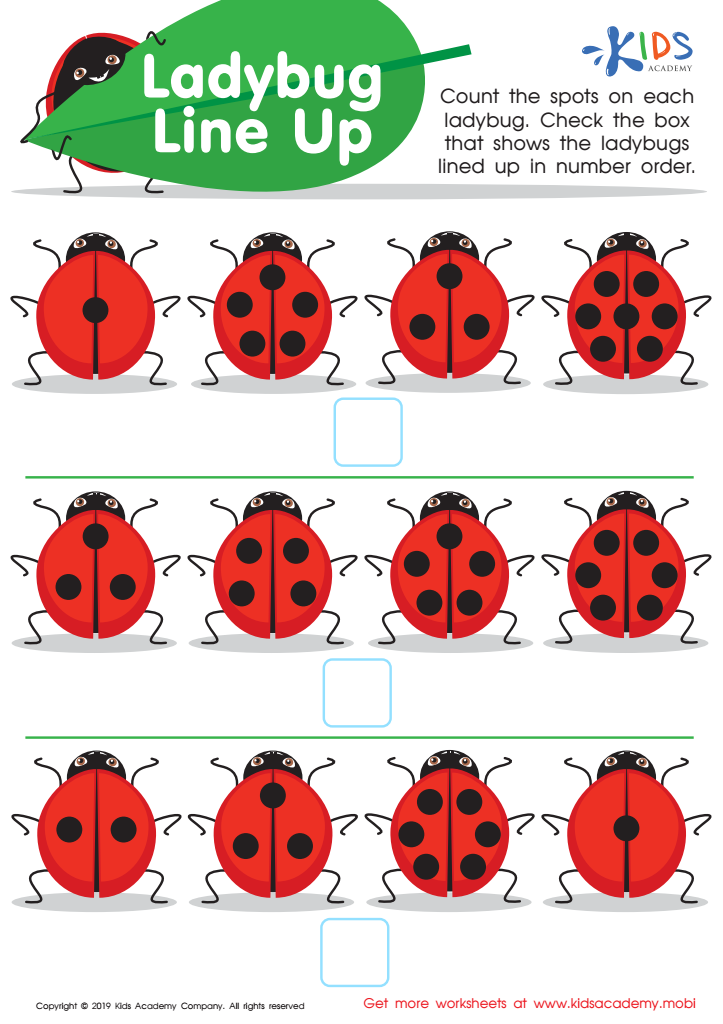

Ladybug Line Up Worksheet
Understanding sequencing in math is crucial for children aged 6-8, as it lays a solid foundation for more advanced mathematical concepts and everyday problem-solving. Sequencing refers to the ability to understand and arrange events, numbers, or objects in a logical order. For young learners, mastering sequencing is integral to developing number sense, which is the core comprehension of numbers and their relationships.
When children grasp sequencing, they can more easily learn to count, recognize patterns, and comprehend addition and subtraction. These skills are not only essential for higher-level math but also for understanding time, following directions, and organizing tasks. Sequencing also fosters critical thinking and can improve reading comprehension, as storytelling and narratives depend on a clear and logical sequence of events.
Moreover, children who develop strong sequencing skills gain confidence in their ability to tackle more complex concepts. Encouragingly, support from parents and teachers helps turn math into a fun and engaging subject rather than a daunting task. Practical activities such as arranging number cards, storytelling, and playing sequence-based games can make learning intuitive and enjoyable. By prioritizing sequencing, parents and teachers can help children build a robust mathematical foundation that supports learning across subjects and enhances their overall cognitive development.
 Assign to My Students
Assign to My Students

